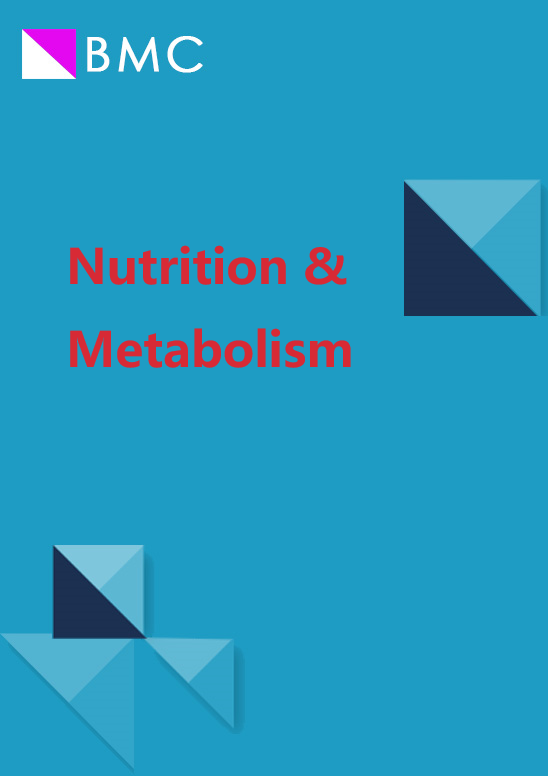干果摄入量与降低 2 型糖尿病风险:双样本泯灭随机研究
IF 3.9
2区 医学
Q2 NUTRITION & DIETETICS
引用次数: 0
摘要
以往的研究表明,干果摄入量是否与 2 型糖尿病有关存在争议。本研究旨在通过开展双样本孟德尔随机研究,探讨干果摄入量对 2 型糖尿病的潜在因果效应。我们使用全基因组关联研究(GWAS)摘要统计进行MR分析,探讨干果摄入量与T2D的因果关系。反方差加权(IVW)法是 MR 分析的主要分析方法。此外,还采用了 MR-Egger 法和加权中位数法作为 IVW 法的补充。此外,还使用了 Cochrane's Q 检验、MR-Egger 截距检验和留一分析来进行敏感性分析。漏斗图用于评估发表偏倚。IVW分析结果表明,干果摄入可降低T2D风险[几率比(OR)=0.392,95%置信区间(CI):0.241-0.636,P值=0.0001]。此外,附加方法加权中位数的结果与 IVW 估计的效果相同。此外,敏感性分析表明,我们的 MR 分析不受异质性和水平多向性的影响。最后,撇除法的结果显示了我们的 MR 结果的稳健性。漏斗图显示了对称分布。我们的研究为干果摄入对 T2D 的益处提供了证据。因此,合理食用干果可以起到初级预防的作用。本文章由计算机程序翻译,如有差异,请以英文原文为准。
Dried fruit intake and lower risk of type 2 diabetes: a two-sample mendelian randomization study
Previous studies have shown controversy about whether dried fruit intake is associated with type 2 diabetes. This study aimed to examine the potential causal effect of dried fruit intake on type 2 diabetes by conducting a two-sample Mendelian randomization study. We used genome-wide association study (GWAS) summary statistics for MR analysis to explore the causal association of dried fruit intake with T2D. The inverse-variance weighted (IVW) method was used as the main analytical method for MR analysis. In addition, the MR-Egger method and the weighted median method were applied to supplement the IVW method. Furthermore, Cochrane’s Q test, MR-Egger intercept test, and leave-one-out analysis were used to perform sensitivity analysis. The funnel plot was used to assess publication bias. The results from the IVW analysis indicated that dried fruit intake could reduce the risk of T2D [odds ratio (OR) = 0.392, 95% confidence interval (CI): 0.241–0.636, p-value = 0.0001]. In addition, the result of additional method Weighted median is parallel to the effects estimated by IVW. Furthermore, the sensitivity analysis illustrates that our MR analysis was unaffected by heterogeneity and horizontal pleiotropy. Finally, the results of the leave-one-out method showed the robustness of our MR results. And the funnel plot shows a symmetrical distribution. Our study provides evidence for the benefits of dried fruit intake on T2D. Therefore, a reasonable consumption of dried fruit may provide primary prevention.
求助全文
通过发布文献求助,成功后即可免费获取论文全文。
去求助
来源期刊

Nutrition & Metabolism
医学-营养学
CiteScore
8.40
自引率
0.00%
发文量
78
审稿时长
4-8 weeks
期刊介绍:
Nutrition & Metabolism publishes studies with a clear focus on nutrition and metabolism with applications ranging from nutrition needs, exercise physiology, clinical and population studies, as well as the underlying mechanisms in these aspects.
The areas of interest for Nutrition & Metabolism encompass studies in molecular nutrition in the context of obesity, diabetes, lipedemias, metabolic syndrome and exercise physiology. Manuscripts related to molecular, cellular and human metabolism, nutrient sensing and nutrient–gene interactions are also in interest, as are submissions that have employed new and innovative strategies like metabolomics/lipidomics or other omic-based biomarkers to predict nutritional status and metabolic diseases.
Key areas we wish to encourage submissions from include:
-how diet and specific nutrients interact with genes, proteins or metabolites to influence metabolic phenotypes and disease outcomes;
-the role of epigenetic factors and the microbiome in the pathogenesis of metabolic diseases and their influence on metabolic responses to diet and food components;
-how diet and other environmental factors affect epigenetics and microbiota; the extent to which genetic and nongenetic factors modify personal metabolic responses to diet and food compositions and the mechanisms involved;
-how specific biologic networks and nutrient sensing mechanisms attribute to metabolic variability.
 求助内容:
求助内容: 应助结果提醒方式:
应助结果提醒方式:


